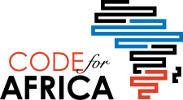Reporting
Track tutorials
Open Doors and Open Data By Learning Data Jargon One of the biggest issues journalists face when confronted with the abundance of new data sources is the vast array of jargon used by technical experts communicating the nuances of their field. The geospatial community is particularly adept at creating obscure terminology and exotic file types. Dropping a […]
Introduction Jeo is a WordPress theme that acts as an online platform for geojournalism and allows publication of news articles as layers of information on digital maps. With Jeo, creating interaction between the layers of data and contextual information is much more intuitive. The theme is developed to be a base of child themes and is […]
Easy steps for making charts and infographics using DataWrapper
Apps Apps Data Data Visualization VisualizationLeading media organizations are using Datawrapper, a simple and free tool, to improve their storytelling this way. Datawrapper is an interactive chart app that can be embedded into stories such as this one, which shows the Nigerian government’s proposed budget in 10 charts. No related posts.
In this tutorial, we’ll learn how to create an animation, it must be a short story that will serve as a teaser to invite the user to get to know the story we want to tell No related posts.
Balloon mapping provides individuals or groups with a low-cost means to create a running record of events in map form, one that is temporally accurate and easy to share. No related posts.
In this tutorial we will learn how to make a column chart using data in a table and how to customize it with some icons. No related posts.
Ushahidi is a great open-source software for presenting many kinds of information on a map. You can set up an Ushahidi site using Crowdmap which will help you tell a story by bringing together a map with the information and reports you choose to include. No related posts.
No tutorials found.
In an effort to bring local context to climate reporting in Western Colorado, Julia Kumari Drapkin started iSeeChange–an online weather and climate journal–in 2012 to help identify how the listeners of her local community radio station were being impacted by changes in the environment. Four years later, iSeeChange is a hybrid citizen-science, social media platform used by people around the world to document and share their experience of environmental change. Using geotagged photos coupled with data on the weather and atmospheric conditions, iSeeChange is working to create a collective climate journal for present and future generations.
By comparing maximum temperatures today against predictions for 2050 and 2070, this new map helps answer a simple question with a complicated answer. As the climate changes, what is weather going feel like where I live?
How GeoJournalism is changing the way we understand and communicate environmental information. With so many systems out there tracking the status of the planet’s health, telling this story with vigor and imagination should be more feasible than ever.







